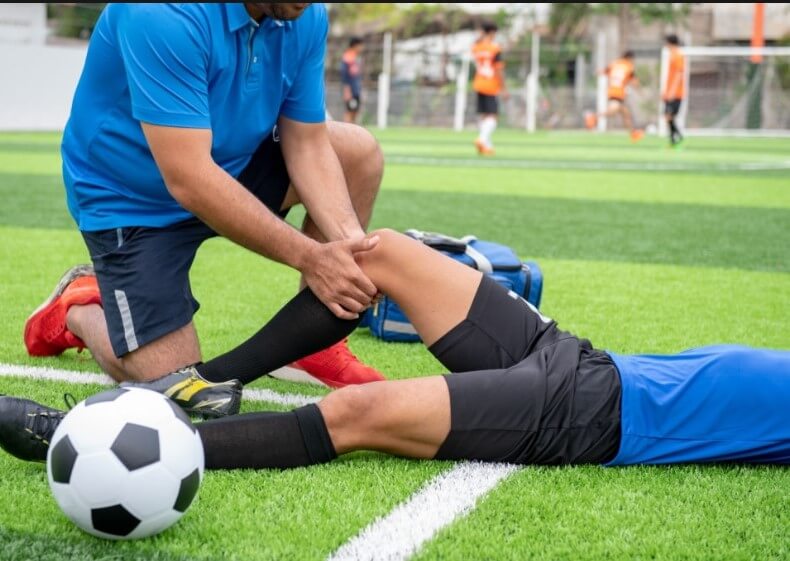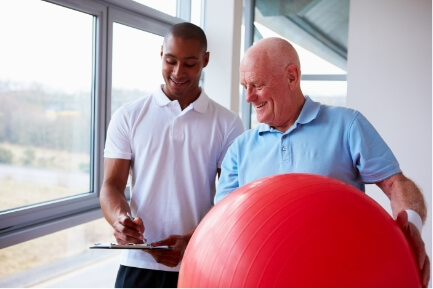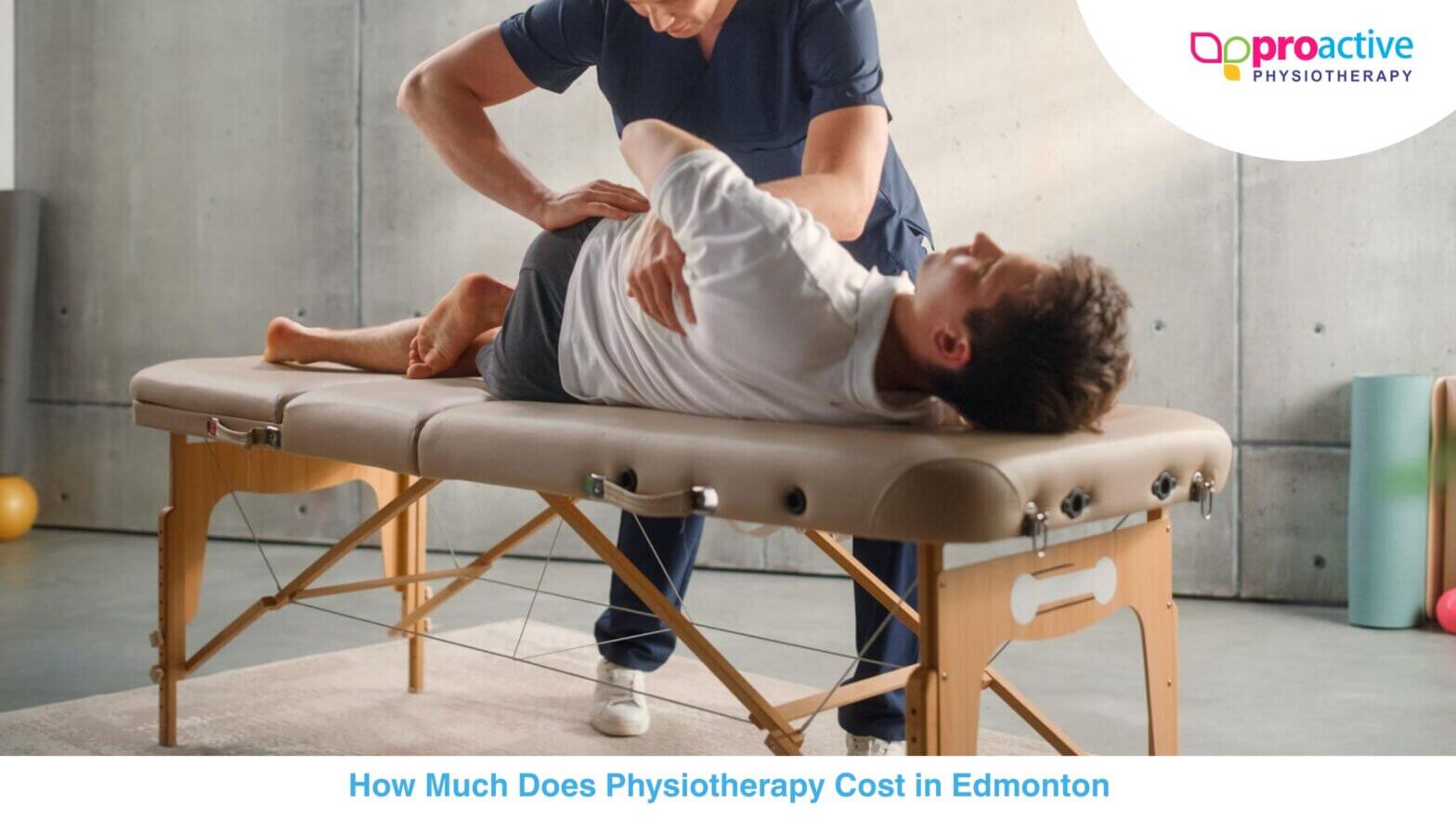Sports injuries are a common occurrence among athletes of all levels and ages. These injuries can range from minor sprains and strains to more serious fractures and dislocations. If you’re an athlete in Edmonton, it’s important to be aware of the most common sports injuries and how to prevent them.
In this article, we’ll be discussing “Sports Injury Edmonton: Common Injuries and Treatment.” Our aim is to provide readers with a comprehensive guide to sports injuries and their treatments, specifically in the context of Edmonton. Whether you’re a professional athlete or someone who enjoys participating in sports as a hobby, this article is for you.
Before we dive into the details, let’s define what we mean by sports injuries. Sports injuries are injuries that occur while participating in physical activity or sports. These injuries can be acute or chronic and can affect any part of the body. The most common types of sports injuries include sprains, strains, fractures, dislocations, and concussions.
Now that we’ve established what we mean by sports injuries, let’s explore the most common types of sports injuries in Edmonton and how to prevent and treat them.
Types of Sports Injuries
In Edmonton, the most common types of sports injuries include:
- Sprains: A sprain is an injury to a ligament, which connects bones to each other. Sprains commonly occur in the ankle, knee, or wrist and can be caused by sudden twisting or turning movements. Symptoms of a sprain include pain, swelling, and bruising.
- Strains: A strain is an injury to a muscle or tendon, which connects muscles to bones. Strains commonly occur in the hamstring, quadriceps, or calf muscles and can be caused by overstretching or overuse. Symptoms of a strain include pain, swelling, and weakness.
- Fractures: A fracture is a break in a bone. Fractures commonly occur in the wrist, ankle, or collarbone and can be caused by sudden impact or overuse. Symptoms of a fracture include pain, swelling, and deformity.
- Dislocations: A dislocation occurs when a bone is forced out of its joint. Dislocations commonly occur in the shoulder or knee and can be caused by a fall or sudden impact. Symptoms of a dislocation include pain, swelling, and immobility.
- Concussions: A concussion is a type of traumatic brain injury that occurs when the brain is shaken inside the skull. Concussions commonly occur in contact sports such as football or hockey and can be caused by a blow to the head or body. Symptoms of a concussion include headache, dizziness, and confusion.
According to a study conducted by the University of Alberta, sports-related injuries in Edmonton accounted for approximately 18% of all emergency department visits in 2019. Sprains and strains were the most common types of injuries, followed by fractures and dislocations. It’s important to seek medical attention if you experience any of these symptoms, as untreated injuries can lead to long-term complications.
Prevention Tips
Preventing sports injuries is crucial for athletes of all levels. Not only can injuries cause physical pain and limit performance, but they can also lead to long-term complications. Here are some tips to help prevent sports injuries:
- Warm-up and cool down: Before engaging in physical activity, it’s important to warm up your muscles and prepare your body for exercise. This can be done by performing light aerobic exercise, stretching, and mobility exercises. After exercise, it’s equally important to cool down and stretch to prevent muscle soreness and stiffness.
- Use proper equipment: Wearing the appropriate gear and equipment for your sport can significantly reduce the risk of injury. This includes helmets, protective padding, and proper footwear.
- Build strength and endurance: Incorporating strength and endurance training into your exercise routine can help prevent injuries by improving your overall physical fitness and reducing the risk of muscle imbalances.
- Maintain proper technique: Using proper form and technique when performing exercises and participating in sports can reduce the risk of injury. If you’re unsure about proper technique, seek guidance from a coach or trainer.
- Proper nutrition and hydration: Eating a balanced diet and staying hydrated is important for overall health and can also help prevent injuries by providing the necessary nutrients and fluids for muscle repair and recovery.
In addition to these tips, it’s important to listen to your body and take breaks when necessary. Pushing yourself too hard or ignoring pain can lead to injuries. By taking a proactive approach to injury prevention, you can stay healthy and perform at your best.
Treatment Options
If you do experience a sports injury, it’s important to seek medical attention to properly diagnose and treat the injury. Here are some common treatment options for sports injuries:

- Rest: Depending on the severity of the injury, rest may be the best course of action. Resting the affected area can give it time to heal and prevent further damage.
- Ice and heat therapy: Applying ice or heat to the affected area can help reduce inflammation and pain. Ice therapy is typically used for acute injuries, while heat therapy is used for chronic injuries.
- Compression: Applying compression to the affected area can help reduce swelling and promote healing.
- Physical therapy: Physical therapy involves exercises and techniques designed to improve strength, range of motion, and function. It can be used to treat a variety of sports injuries.
- Medications: Over-the-counter pain medications such as ibuprofen can help relieve pain and reduce inflammation.
- Surgery: In severe cases, surgery may be necessary to repair the injury.
The best course of treatment will depend on the type and severity of the injury. Seeking medical attention early on can improve the chances of a full recovery. According to a study by the Canadian Institute for Health Information, over 8 million Canadians sought medical attention for sports-related injuries in 2018-2019. Of these injuries, fractures were the most common reason for hospitalization.
It’s important to follow your healthcare provider’s instructions for treatment and rehabilitation to ensure a successful recovery. Ignoring or neglecting an injury can lead to long-term complications and even permanent damage.
Rehabilitation and Recovery
Rehabilitation and recovery are important aspects of treating sports injuries. These processes are designed to restore function and mobility to the affected area and prevent future injuries. Here’s what you need to know about rehabilitation and recovery:
- Importance of rehabilitation and recovery: Rehabilitation and recovery are crucial for restoring strength, range of motion, and function to the affected area. Without proper rehabilitation, the injured area may remain weak and susceptible to future injuries.
- Rehabilitation process: The rehabilitation process typically involves physical therapy exercises and techniques designed to promote healing and restore function. This may include exercises to improve strength, flexibility, and balance, as well as techniques to improve joint mobility and reduce pain and swelling.
- Benefits of rehabilitation: Proper rehabilitation can help speed up the healing process and reduce the risk of future injuries. It can also improve overall physical fitness and performance.
- Tips for a successful recovery: To ensure a successful recovery, it’s important to follow your healthcare provider’s instructions for treatment and rehabilitation. This may include attending physical therapy sessions, performing exercises at home, and avoiding activities that may aggravate the injury.
- Physical therapy and exercise: Physical therapy and exercise are important components of the rehabilitation process. They can help improve strength, flexibility, and function, as well as reduce pain and swelling. Your healthcare provider may recommend specific exercises or techniques based on your injury and individual needs.
It’s important to be patient and consistent during the rehabilitation and recovery process. It can take time to fully recover from a sports injury, but with proper treatment and rehabilitation, you can get back to doing the activities you love.
Importance of Seeking Professional Help
Seeking professional help is crucial for the proper diagnosis, treatment, and management of sports injuries. Here’s why it’s important to seek professional help:
- Proper diagnosis: Sports injuries can vary in severity and may require different treatment approaches. A healthcare professional can properly diagnose the injury and recommend the appropriate course of treatment.
- Treatment options: A healthcare professional can provide a range of treatment options, including medications, physical therapy, and surgery if necessary.
- Management: A healthcare professional can provide guidance on how to manage the injury and prevent future injuries. They can also provide advice on when it’s safe to return to sports and how to prevent re-injury.
There are several professionals who can help with sports injuries, including:
- Family physicians: Family physicians can diagnose and treat a range of sports injuries and provide guidance on injury prevention and management.
- Sports medicine physicians: Sports medicine physicians specialize in the treatment and management of sports-related injuries and can provide more advanced treatment options.
- Physiotherapists: Physiotherapists are trained in exercise therapy and can provide rehabilitation exercises to help restore function and mobility.
- Athletic therapists: Athletic therapists specialize in the prevention, treatment, and rehabilitation of sports injuries.
- Chiropractors: Chiropractors specialize in the treatment of musculoskeletal injuries and can provide manual therapies to help reduce pain and improve function.
It’s important to seek professional help early on if you experience a sports injury. Early intervention can improve the chances of a full recovery and prevent long-term complications.
Common Myths About Sports Injuries
There are several common myths about sports injuries that can be misleading or even harmful. Here are some of the most common myths and why they are incorrect:
- Myth: “No pain, no gain.” Reality: Pain is a signal that something is wrong. Ignoring pain can lead to further injury and long-term complications.
- Myth: “Stretching before exercise prevents injury.” Reality: While stretching can help improve flexibility and mobility, it has not been shown to prevent injuries. Warm-up exercises and proper technique are more effective at preventing injuries.
- Myth: “Ice is always better than heat for injuries.” Reality: Both ice and heat can be effective for treating injuries, depending on the type and severity of the injury. Ice is typically used for acute injuries to reduce inflammation, while heat is used for chronic injuries to promote blood flow and healing.
- Myth: “Rest is the best treatment for all injuries.” Reality: Rest may be the best course of treatment for some injuries, but for others, rehabilitation exercises and physical therapy may be necessary to restore function and prevent future injuries.
- Myth: “Injuries only happen to athletes who don’t take proper precautions.” Reality: Even with proper precautions, injuries can still occur. Injuries can be caused by sudden impacts, accidents, or even overuse.
It’s important to be aware of these common myths and seek guidance from a healthcare professional for proper diagnosis and treatment of sports injuries. By debunking these myths, we can better understand how to prevent and treat sports injuries.
When to Return to Sports
Returning to sports after a sports injury should be done carefully to prevent re-injury. Here’s what you need to know about when it’s safe to return to sports:
- Medical clearance: Before returning to sports, it’s important to get medical clearance from a healthcare professional. This can help ensure that the injury has fully healed and that it’s safe to return to physical activity.
- Pain-free: It’s important to be pain-free before returning to sports. If you experience pain or discomfort during physical activity, it’s a sign that the injury has not fully healed.
- Range of motion: You should have full range of motion in the injured area before returning to sports. This can help prevent re-injury and improve performance.
- Strength: You should have adequate strength in the injured area before returning to sports. This can help prevent re-injury and improve overall physical fitness.
- Technique: It’s important to use proper technique when returning to sports to prevent re-injury. This may involve modifications to your technique or equipment.
It’s important to listen to your body and not push yourself too hard when returning to sports. Start with light physical activity and gradually increase the intensity and duration over time. If you experience pain or discomfort, it’s important to stop and rest. By following these guidelines, you can safely return to sports after a sports injury.
Conclusion
In conclusion, sports injuries are a common occurrence among athletes in Edmonton. The most common types of sports injuries include sprains, strains, fractures, dislocations, and concussions. Preventing sports injuries is important and can be done by warming up and cooling down, using proper equipment, building strength and endurance, maintaining proper technique, and proper nutrition and hydration.
If you do experience a sports injury, it’s important to seek medical attention and follow a proper course of treatment and rehabilitation. Rehabilitation and recovery are important for restoring function and mobility to the affected area and preventing future injuries.
Common myths about sports injuries should be debunked, and it’s important to seek professional help for the proper diagnosis, treatment, and management of sports injuries. Before returning to sports, it’s important to get medical clearance, be pain-free, have full range of motion, adequate strength and use proper technique.
To prevent sports injuries and stay healthy, be proactive in injury prevention, listen to your body, and seek professional help when necessary. By following these guidelines, you can stay healthy and perform at your best in your sports activities.




